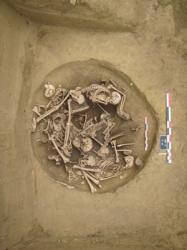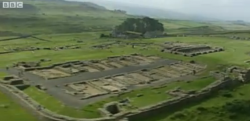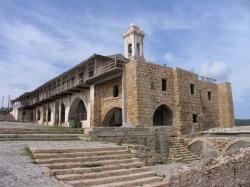INSTITUT SUPERIEUR D'ANTHROPOLOGIE
INSTITUTE OF ANTHROPOLOGY
ONLINE COURSES / COURS A DISTANCE
OPEN COURSE : FEBRUARY 2013
HRM 104 : INTRODUCTION TO INTANGIBLE CULTURAL HERITAGE
REGISTER NOW
FRANCE – 
 Bergheim - Un site pré- et protohistorique a été fouillé sur près de 2 ha sur la commune de Bergheim (Haut-Rhin), au lieu-dit Saulager. L'occupation humaine la plus ancienne remonte au Néolithique ancien (5300 – 5000 av. J.-C.). Six bâtiments d'habitation, derniers vestiges d'un village de la culture rubanée, ont été fouillés. Une dizaine de fosses circulaires, contenant des inhumations, date du Néolithique récent (4000 - 3600 av. J.-C.). La plus spectaculaire a livré huit squelettes d’enfants et d’adultes et plusieurs bras gauches surnuméraires qui présentent des fractures sur os frais. La dernière période correspond à une vaste zone d’ensilage (environ 70 silos) datant de la fin du Hallstatt et du début de La Tène (520-450 av. J.-C.). Des inhumations occupaient également certains silos.
Bergheim - Un site pré- et protohistorique a été fouillé sur près de 2 ha sur la commune de Bergheim (Haut-Rhin), au lieu-dit Saulager. L'occupation humaine la plus ancienne remonte au Néolithique ancien (5300 – 5000 av. J.-C.). Six bâtiments d'habitation, derniers vestiges d'un village de la culture rubanée, ont été fouillés. Une dizaine de fosses circulaires, contenant des inhumations, date du Néolithique récent (4000 - 3600 av. J.-C.). La plus spectaculaire a livré huit squelettes d’enfants et d’adultes et plusieurs bras gauches surnuméraires qui présentent des fractures sur os frais. La dernière période correspond à une vaste zone d’ensilage (environ 70 silos) datant de la fin du Hallstatt et du début de La Tène (520-450 av. J.-C.). Des inhumations occupaient également certains silos.
http://www.antea-archeologie.com/news/3/92/Des-fosses-et-des-hommes.html
ROYAUME UNI –  – Hadrian Wall - The Hadrian's Wall Trust is warning that parts of the World Heritage site are being worn away by poor weather and the number of visitors it attracts. The amount of walkers there has increased dramatically over the years and now the trust is asking for help trying to preserve the ancient site. Fiona Trott reports.
– Hadrian Wall - The Hadrian's Wall Trust is warning that parts of the World Heritage site are being worn away by poor weather and the number of visitors it attracts. The amount of walkers there has increased dramatically over the years and now the trust is asking for help trying to preserve the ancient site. Fiona Trott reports.
VIDEO - http://www.bbc.co.uk/news/uk-21304579
CHYPRE –  - Apostolos Andreas - After many years’ efforts, the first step for the restoration of the historical monastery of Apostolos Andreas has been finally made. Last week an agreement between UNDP (United Nations Development Programme) and the Church of Cyprus has been signed for the monument in the Turkish occupied Karpass Peninsula. The protocol will also be signed in the occupied territory with the Turkish Cypriot EVKAF Administration, which is responsible for the properties of shrines, Islamic cemeteries and Muslim educational institutions. The restoration will be completed in three phases, starting with works at the ancient chapel and the posterior church, then proceeding to the historic nucleus and ending with the surrounding area. The monastery will be restored according to a study prepared by the University of Patras. The project will be funded by UNDP, the USA, the EU, the Church of Cyprus and the Turkish Cypriot side. Apostolos Andreas’ Monastery is built on the Cape Apostolos Andreas, which lies at the most eastern point of the occupied Karpass Peninsula. According to tradition, the monastery was founded as during a journey to the Holy Land, the ship which was transporting Saint Andrew went off course and struck the rocks here. On coming ashore, Andrew struck the rocks with his staff, at which point a spring gushed forth. In old maps of Cyprus the area is indicated as “Capo de Santo Andrea”. Almost no traces of the original temple have been preserved. However, in the 15th century, a temple with gothic elements has been built in its place, close to the shore. The church was built in the 19th century and lies at a higher point.
- Apostolos Andreas - After many years’ efforts, the first step for the restoration of the historical monastery of Apostolos Andreas has been finally made. Last week an agreement between UNDP (United Nations Development Programme) and the Church of Cyprus has been signed for the monument in the Turkish occupied Karpass Peninsula. The protocol will also be signed in the occupied territory with the Turkish Cypriot EVKAF Administration, which is responsible for the properties of shrines, Islamic cemeteries and Muslim educational institutions. The restoration will be completed in three phases, starting with works at the ancient chapel and the posterior church, then proceeding to the historic nucleus and ending with the surrounding area. The monastery will be restored according to a study prepared by the University of Patras. The project will be funded by UNDP, the USA, the EU, the Church of Cyprus and the Turkish Cypriot side. Apostolos Andreas’ Monastery is built on the Cape Apostolos Andreas, which lies at the most eastern point of the occupied Karpass Peninsula. According to tradition, the monastery was founded as during a journey to the Holy Land, the ship which was transporting Saint Andrew went off course and struck the rocks here. On coming ashore, Andrew struck the rocks with his staff, at which point a spring gushed forth. In old maps of Cyprus the area is indicated as “Capo de Santo Andrea”. Almost no traces of the original temple have been preserved. However, in the 15th century, a temple with gothic elements has been built in its place, close to the shore. The church was built in the 19th century and lies at a higher point.
http://www.archaiologia.gr/en/blog/2013/02/04/restoration-of-apostolos-andreas-to-begin/
FRANCE – Carnac -La mairie a délivré un permis de construire en septembre dernier, à l'emplacement du tertre de Lann Granvillarec. Ce permis autorise la construction d'une maison individuelle de 230 m2. « Ce terrain archéologique fait partie des lieux retenus dans le projet de classement Unesco de 557 sites mégalithiques du sud Morbihan », explique Christian Obeltz. Cette affaire tombe mal alors que le dossier sur le classement Unesco est en pleine négociation. D'autant que Jacques Bruneau, le maire de Carnac, préside l'association des « Paysages de mégalithes de Carnac et du sud Morbihan ». Une association qui a été créée pour faire aboutir ce projet...
http://www.ouest-france.fr/ofdernmin_-a-Carnac-on-construit-sur-un-site-archeologique-classe-_40771-2158214-pere-bre_filDMA.Htm
USA – Duxbury - An archeological recovery project has discovered what might be the site of the First Meeting House in Duxbury, a historically significant building that centered a fledgling English settlement when Pilgrims Myles Standish, John and Priscilla Alden, and Elder William Brewster established a new community on Duxbury’s shores. A ground radar scan revealed straight-line trenches that show a partial outline of a building that conforms to what is known about the First Meeting House, a 20- by 32-foot structure, according to archeologist Craig Chartier of the Plymouth Archeological Recovery Project, who supervised the examination last fall. The scan was made in an old burial ground now called the Myles Standish Burial Ground, where historians and local residents believe the first simple meetinghouse had been built. The First Meeting House was built when some of the 1620 Pilgrims who left the Plymouth settlement sought permission in 1634 to hold worship services near their new homes rather than travel to Plymouth each Sunday. The colony’s governor required them to build a meetinghouse first. “Seventeenth-century meetinghouses were commonly placed on rises in the center of a community as a way of exemplifying the structures’ central role in religious and civil life and as a way to let the meetinghouse shine as a city on a hill to give people an example to which to live their lives,” Chartier wrote in his report last month on the scan’s findings.
http://www.boston.com/news/local/massachusetts/2013/02/03/archeology-project-may-have-found-site-first-meeting-house-duxbury/eomGZeZvHvxmplFoQ3siNI/story.html
TURQUIE – Izmir - The İzmir Metropolitan Municipality has started demolitions on appropriated land in order to unearth a Graeco-Roman theatre under shanty houses in the city’s Kadifekale district. Eight of the 52 houses to be demolished in the first stage have been torn down and archaeologists have already unearthed the walls of the theatre, which has a capacity of 16,000 people. The most detailed information about the ancient theatre in Kadifekale (literally "the velvet castle" in Turkish) is in the research of Austrian architect Otto Berg and archaeologist Otto Walter, who examined the area in 1917 and 1918, though many researchers have concluded that the remains of the theatre have features of the Roman period. Both the hill and the castle were named Pagos (Greek: Πάγος, Pagus under the Roman Empire) in pre-Turkish times and by the local Greeks in modern times.
http://www.hurriyetdailynews.com/